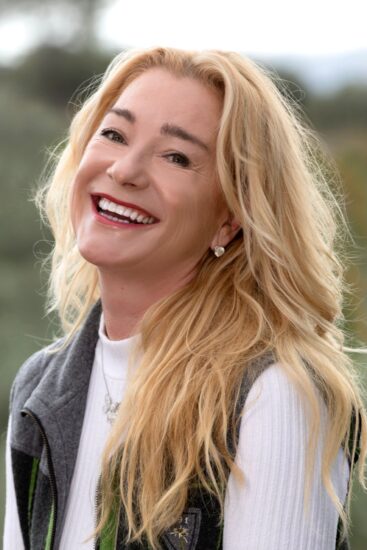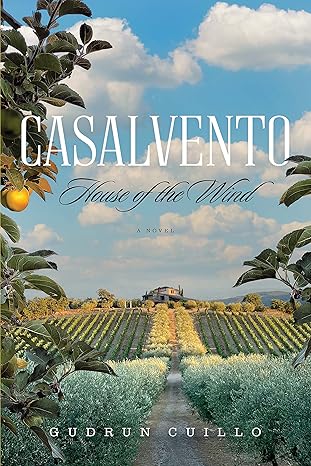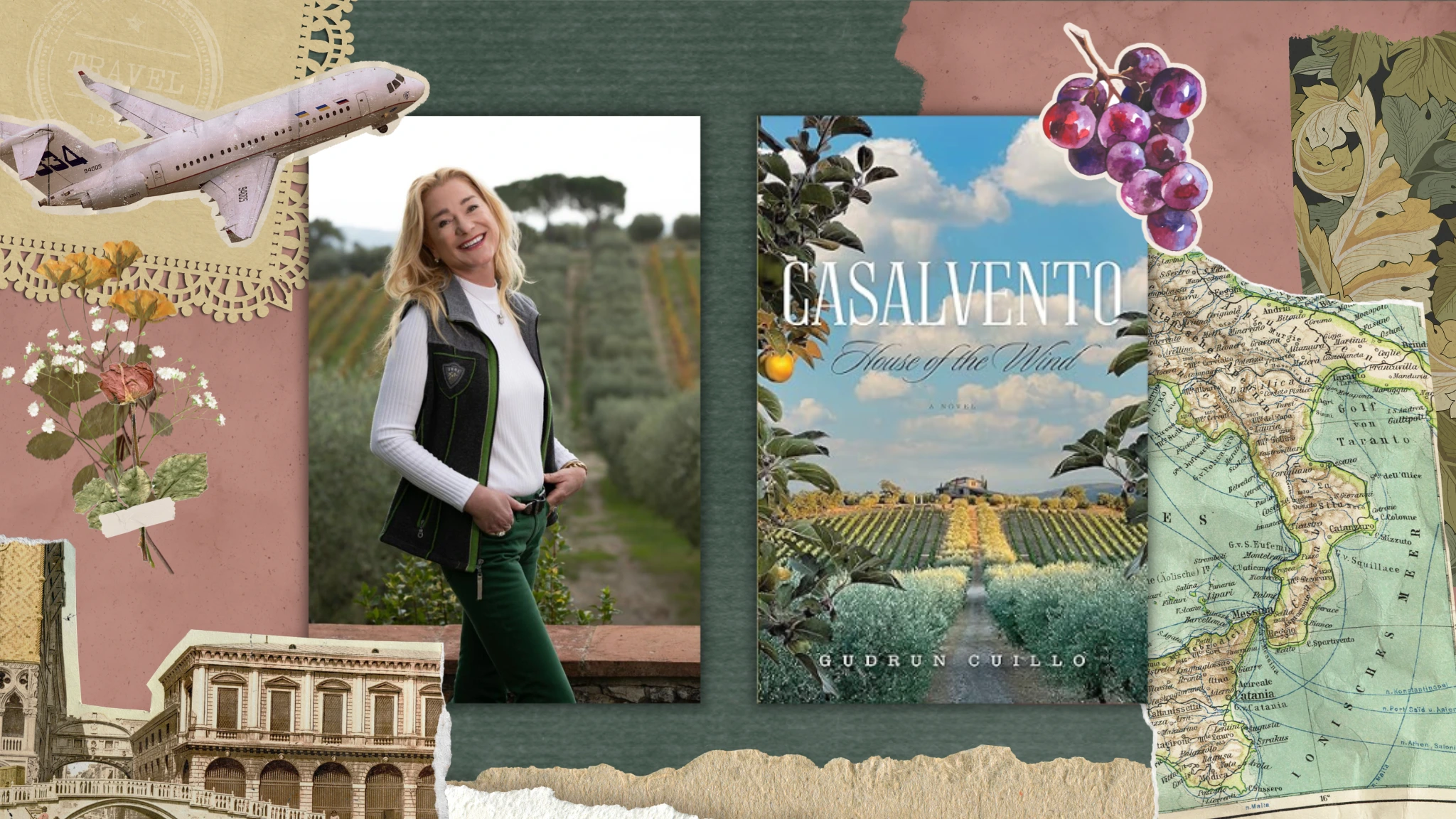Casalvento: House of the Wind by Gudrun Cuillo
In vino veritas. The Latin phrase can be translated as ‘in wine, there is truth.’ It’s an expression with some fact to it, given the effect alcohol can have on loosening the tongue. But in Gudrun Cuillo’s Casalvento: House of the Wind, there’s a different kind of truth that the protagonist finds in wine — not in draining a glass of it, but instead by making it on the property of an Italian villa.
Casalvento follows Erika Germoglio, a successful New York City businesswoman who stumbles into an inheritance of a majestic house, hotel and vineyard in Tuscany, Italy from a grandfather who she never knew — and never knew about. There’s a catch, however; to secure that inheritance, she has to first live there for five months, all while learning how to keep such an estate running. Erika’s torn — torn between her old life in the city and this new opportunity in Italy, torn between the fiancé back in the US and Casalvento’s charming estate-manager-slash-wine-maker. This rich narrative captivates with a story of discovery, love, beauty and what’s important in life.
There’s another element of truth to the story — that Casalvento is a real-life vineyard and villa, and is even the home of the author herself. In this Q&A, Gudrun Cuillo shares the elements of truth to her tale, and what she hopes readers can take away from Erika’s story.
Q: Casalvento is set in the beautiful Chianti region of Tuscany, which plays a central role in the story. How did your personal connection to Tuscany influence your depiction of the setting, and what elements of the region were most important for you to capture in the novel?
A: The story of Chianti Classico about the Medici family. The country sits on the rolling hills with the woodland, the vineyards and the olive groves. It’s an amazing feeling. I wanted to let the world and readers meet, to set them back in time with their busy lives.
Q: Erika’s inheritance comes with the challenge of staying in Tuscany for five months and learning to manage the estates. How do you think this physical and emotional journey reflects common struggles people face when dealing with unexpected life changes?
A: It changes you internally. The experience is also self reflecting — I had to learn how to make wine, how to slow down and see the beauty around you (and me). On that land, every sunset or sunrise is different. Some common struggles would be learning a new language, or growing older.
Q: Family secrets play a significant role in Erika’s story, especially through the letters left by her late grandfather. What inspired you to weave these secrets into the narrative?
A: I was inspired by my late husband’s story about his family coming to the states, and him wanting to go back and buy land in Italy. It was a promise he made to himself, if he would make it in life to be a self-made man. It was amazing to hear those stories from him.
Q: Erika is torn between her life in New York and a new potential future in Italy. How did you approach writing her inner conflict between career, love, and the pull of a new lifestyle? Did you draw on any personal experiences for this?
A: Yes, totally. My upbringing was different. That marriage was a new life. I got lost in this world and forgot about what was really important in life. Money can buy you things, but not happiness and health. But at the same time I’m thankful for the opportunity my husband gave me, and his trust.
Q: The romance in Casalvento has an element of choosing between two very different men — Paolo in Tuscany and Craig back in New York. What themes did you aim to explore through these two relationships?
A: That love is around you, but you need to find the real reason why you love someone. And to have a person next to you that makes you laugh, and in peace with harmony.
Q: In the book, Casalvento and Livernano serve as more than just settings; they almost act as characters themselves. How did you develop the estates’ significance in Erika’s life, and what role do you think the history and legacy of the estates play in her choices?
A: Casalvento was our first property in Tuscany in the historic town of Radda in Chianti. Now it’s my personal home. The cover of the book is actually my home and the view that I see every morning when I get up. It also houses the cellar.
Livernano came 4 years later — a hamlet, a small town that was abandoned in 1953. We rebuilt one house after another and now it’s a resort for our guests, with a restaurant and a church for weddings and get-togethers.
Q: Your novel has been praised for intertwining romance, self-discovery, and family legacies. What do you hope readers take away from Erika’s journey?
A: To see the rainbow. To go to work happy, which sometimes means making changes in your life. To be with family and enjoy friends. You only have one life to live, so make the best out of it. And never forget to say thank you!
RELATED POSTS:
A Captivating Story of Inheritance, Discovery, and the Beauty of Tuscany Awaits
About Gudrun Cuillo:
 Gudrun Cuillo was born in Leibnitz, Austria. Soon after graduation, with her instinctive artistic flair, she joined the opera as an artist-in-residence for stage scenery and makeup. That work eventually took Gudrun to New York to continue her education.
Gudrun Cuillo was born in Leibnitz, Austria. Soon after graduation, with her instinctive artistic flair, she joined the opera as an artist-in-residence for stage scenery and makeup. That work eventually took Gudrun to New York to continue her education.
While enjoying traveling throughout the U.S., Gudrun came to Florida where she fell in love with a successful entrepreneur and Broadway producer, Robert Cuillo. They married and in the ensuring years they established Casalvento Winery in Radda, Chianti Siena, Italy, and restored Livernano, a nearby medieval village, to its original splendor.
Gudrun has had two career passions: winemaking, which has garnered numerous awards and much recognition for Casalvento Winery, and writing. In her debut novel, Gudrun combines her life experience with her gift for storytelling. Visit https://gudruncuillo.com.

Publish Date: 6/6/2023
Genre: Fiction
Author: Gudrun Cuillo
Page Count: 312 pages
Publisher: Greenleaf Book Group Press
ISBN: 9798886450651
Read the original article here



